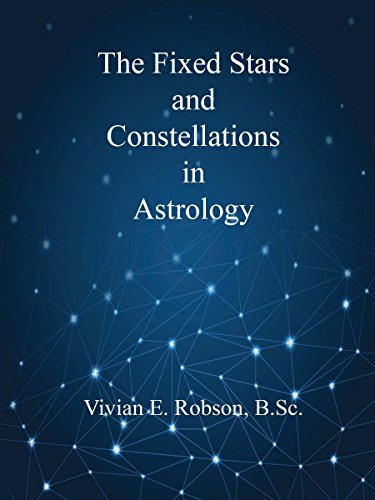
The Fixed Stars and Constellations in Astrology
Introduction
Astrology has long been a field of fascination, with its roots tracing back to ancient civilizations. Among its various branches, the study of fixed stars and constellations holds a unique place. Vivian E. Robson's work on this subject is both extensive and insightful. In this article, we will delve into the intricacies of fixed stars and constellations, their significance in astrology, and how they influence our lives.
What Are Fixed Stars?
Fixed stars are celestial objects that appear to remain in a constant position relative to the other stars in the sky. Unlike planets, which move across the zodiac, fixed stars maintain their positions over long periods. These stars have been studied for their unique influence on human affairs and are a critical component of traditional astrology.
The Importance of Fixed Stars in Astrology
The significance of fixed stars lies in their association with specific traits and events. Astrologers believe that the position of these stars at the time of a person's birth can affect their personality, destiny, and life events. Vivian E. Robson's work provides detailed descriptions of the influences of various fixed stars and how they interact with the planets.
Major Fixed Stars and Their Influences
| Fixed Star | Constellation | Influence |
|---|---|---|
| Regulus | Leo | Leadership, courage, nobility |
| Spica | Virgo | Wealth, success, protection |
| Aldebaran | Taurus | Honor, intelligence, eloquence |
| Antares | Scorpio | Passion, ambition, conflict |
Understanding Constellations
Constellations are groups of stars forming recognizable patterns that have been named and studied since ancient times. Each constellation has its mythology and astrological significance. In astrology, the position of planets in relation to these constellations can influence various aspects of life.
Constellations and Their Mythological Backgrounds
Many constellations are linked to mythological stories and characters. For instance, the constellation of Leo is associated with the Nemean Lion from Greek mythology, symbolizing strength and bravery. Understanding these mythological connections can provide deeper insights into the astrological meanings of constellations.
The Zodiac Constellations
The zodiac constellations are perhaps the most well-known group of constellations in astrology. These twelve constellations correspond to the twelve zodiac signs and form the backdrop for the movement of the planets. Each zodiac sign is associated with specific traits and characteristics, influenced by the stars that make up its constellation.
The Ecliptic and Its Significance
The ecliptic is the apparent path of the Sun across the sky over the course of a year. It passes through the twelve zodiac constellations, making them crucial to astrological practice. The alignment of planets along the ecliptic at the time of birth forms the basis of a natal chart, which is used to interpret an individual's personality and life path.
Combining Fixed Stars and Constellations in Astrology
To fully understand the influence of the cosmos on human affairs, astrologers often combine the study of fixed stars and constellations. This holistic approach provides a more comprehensive view of how celestial bodies interact and shape our lives.
Conclusion
The study of fixed stars and constellations is a fascinating and intricate aspect of astrology. Vivian E. Robson's work offers valuable insights into this field, helping us understand the profound impact of these celestial bodies. By exploring the myths, influences, and positions of fixed stars and constellations, we can gain a deeper appreciation of astrology's complexity and its relevance to our lives.
For more information, visit our website: https://readreviewtalk.com/ and our blog: https://readreviewtalk.com/blog/.
